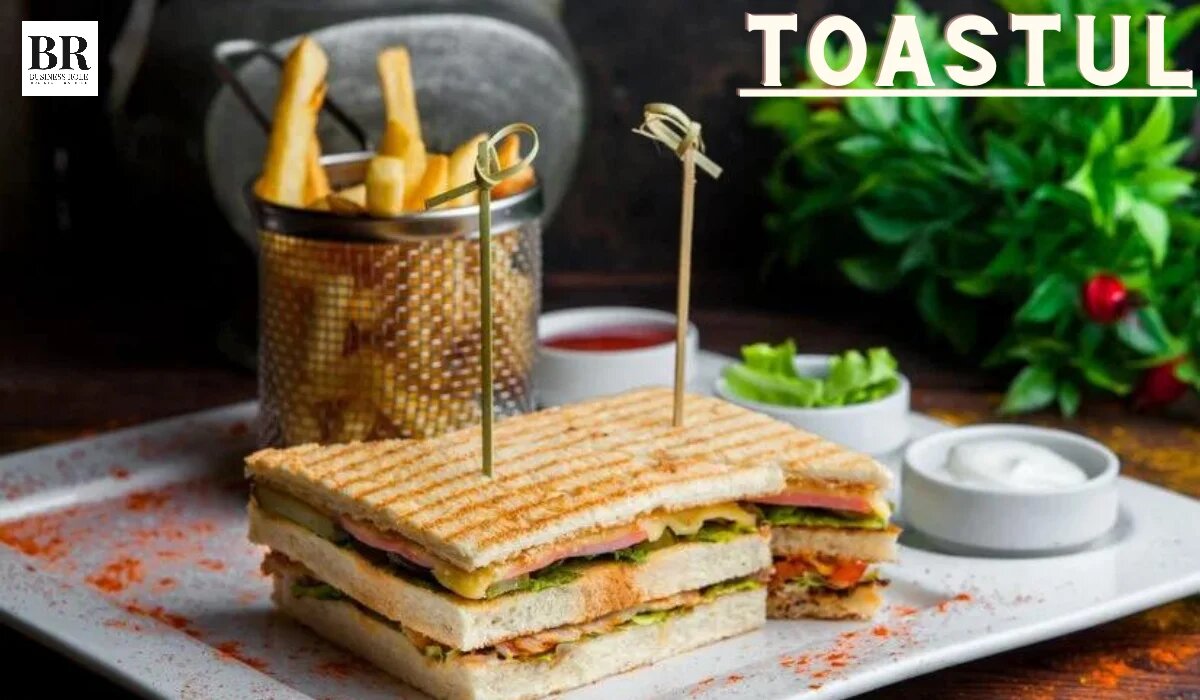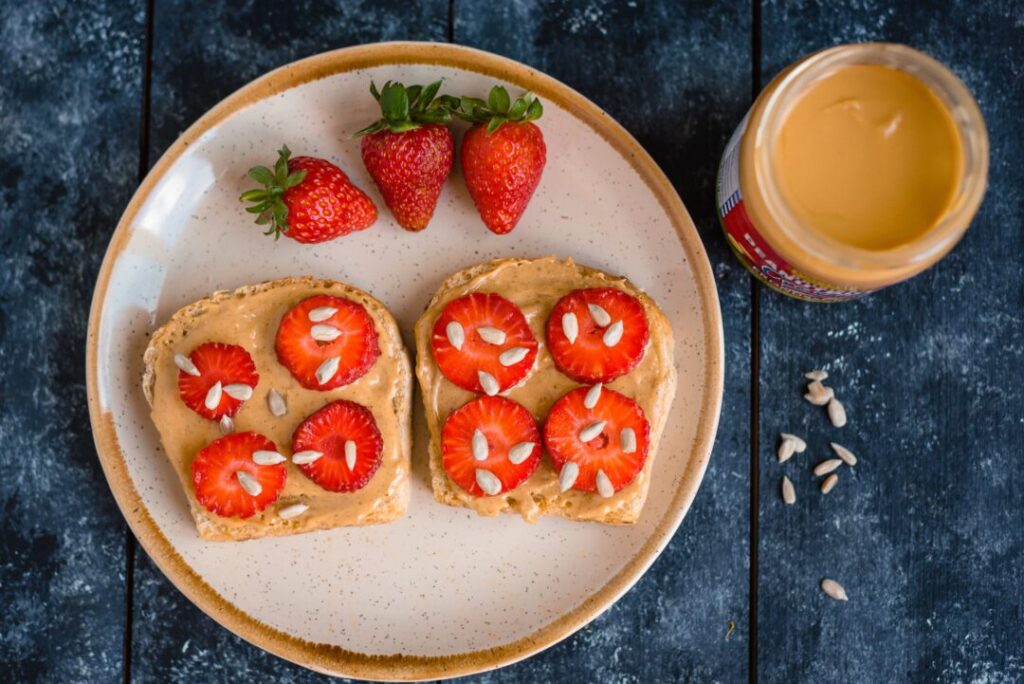
Toastul, a cherished artisanal bread originating from the heart of Romania, embodies a rich culinary tradition that dates back centuries. Born from humble ingredients of flour, salt, and water, this bread has transcended its simple origins to become a beloved delicacy celebrated for its unique flavor and texture. The very essence of Toastul lies in its golden-brown hue and crispy exterior, achieved through a meticulous baking process that involves not one, but two rounds of baking.
As we delve deeper into the origins and crafting of Toastul, we uncover a narrative steeped in cultural heritage and culinary ingenuity. From the moment the dough is carefully shaped into oval loaves to the final transformative step of crafting the garlicky spread known as mamaliga, each stage in the creation of Toastul is a testament to the artisanal skill and dedication of its makers.
Beyond its initial allure lies the versatility of Toastul, as it serves as a canvas for an array of delectable toppings. Whether adorned with sweet jams, creamy nut butters, or the ever-popular avocado, Toastul has earned its place as a cherished breakfast dish enjoyed by people around the globe.
Join us on a journey through the captivating world of Toastul, where tradition meets innovation, and every bite tells a story of culinary excellence.
Origins of Toastul
The Historical Roots of Toastul
In the heart of Romania lies the genesis of Toastul, an artisan bread steeped in tradition and culinary heritage. Born from the necessity of utilizing simple ingredients like flour, salt, and water, Toastul’s origins trace back to the rustic kitchens of Romanian villages.
Crafted with care and ingenuity, Toastul embodies the resourcefulness of its creators, who perfected techniques passed down through generations. From the careful mixing of dough to shaping it into characteristic oval loaves, each step in the bread-making process reflects the dedication of Romanian bakers to their craft.
Central to Toastul’s identity is its unique double baking method. This transformative process, where the bread is baked twice, imparts a golden-brown color and a crispy crust that sets Toastul apart from other bread varieties. Through this meticulous baking ritual, Toastul achieves a texture and flavor that have made it a beloved staple in Romanian cuisine and beyond.
Ingredients and Preparation

Crafting the Essence of Toastul
At the heart of Toastul lies a delicate alchemy of simple ingredients and meticulous preparation. From the humble pantry staples of flour, salt, and water emerges a culinary masterpiece revered for its flavor, texture, and cultural significance.
Flour: The cornerstone of it creation, flour serves as the canvas upon which its essence is painted. Traditionally sourced from locally grown grains, the flour used in it imparts a depth of flavor and character that is unmatched.
Salt: A pinch of salt, carefully measured, enhances the flavor profile of Toastul, balancing its subtle sweetness with a hint of savory goodness. This essential ingredient not only adds complexity to the bread but also plays a crucial role in regulating its fermentation process.
Water: Like the lifeblood that sustains all living things, water is the vital element that binds the ingredients of Toastul together. With just the right amount of hydration, the dough achieves the perfect consistency, ensuring a light and airy texture in the finished bread.
Preparation: Crafting it is a labor of love, requiring patience, skill, and attention to detail. The process begins with the careful mixing of flour, salt, and water to form a cohesive dough. This dough is then shaped into oval loaves, each one a testament to the artisan’s touch.
Once shaped, the loaves are left to rise, allowing the yeast to work its magic and impart flavor to the bread. After a period of fermentation, the loaves are baked in a hot oven until they achieve a golden-brown hue and a crisp crust.
But the journey doesn’t end there. In a final act of culinary brilliance, the baked loaves are sliced in half lengthwise, their soft inner bread scraped out and transformed into a garlicky spread known as mamaliga. The hollowed loaves are then baked again until they reach the perfect level of crispiness.
Through this meticulous process of ingredient selection and preparation, it emerges as more than just bread it becomes a symbol of tradition, craftsmanship, and the enduring spirit of Romanian cuisine.
The Double Baking Process

Elevating Toastul A Culinary Alchemy
In the enchanting world of artisan bread-making, few techniques rival the transformative power of the double baking process, a hallmark of it creation. This meticulous method, passed down through generations, is the secret behind Toastul distinctive golden-brown color, crispy crust, and unparalleled depth of flavor.
First Bake Crafting the Foundation
The journey of it begins with the initial bake, where carefully shaped loaves are placed in a hot oven, their surfaces kissed by the heat of the flames. During this stage, the dough undergoes a remarkable metamorphosis as it rises and expands, filling the air with the tantalizing aroma of freshly baked bread.
As the loaves emerge from the oven, they bear the marks of their fiery ordeal—a golden-brown crust that promises a symphony of textures and flavors with every bite. But this is just the beginning of it culinary journey.
Interlude A Moment of Rest
After the first bake, the loaves are allowed to cool, their surfaces crackling softly as they settle into their newfound form. It is a moment of anticipation, as bakers and enthusiasts alike await the next phase of it transformation.
Second Bake The Finishing Touch
With precision and care, the cooled loaves are halved lengthwise, revealing their soft, pillowy interiors. But rather than being served in their entirety, these loaves undergo a second journey into the oven, where they are baked once more until they achieve the perfect level of crispiness.
During this final bake, the hollowed loaves undergo a magical alchemy, as their interiors are transformed into a canvas for flavor. Meanwhile, the exteriors undergo a delicate dance with the flames, developing a crispness that provides the ideal contrast to the softness within.
The Culmination A Masterpiece Unveiled
As the second bake draws to a close, the aroma of freshly baked bread fills the air once more, heralding the culmination of it journey. With a golden-brown crust and a crispy exterior, each slice of it becomes a testament to the artistry and skill of its creators.
In the end, it is not just bread that emerges from the oven, but a culinary masterpiece—an embodiment of tradition, craftsmanship, and the timeless allure of artisanal baking. Through the double baking process, Toastul transcends the ordinary, inviting us to savor the magic of its creation with every delicious bite.
Crafting the Garlicky Spread Mamaliga

The Essence of Flavor Unveiling the Art of Mamaliga
In the realm of Romanian cuisine, Mamaliga stands as a culinary masterpiece—a garlicky spread that elevates Toastul from mere bread to a symphony of flavors. Crafted with care and infused with tradition, Mamaliga embodies the essence of Romanian cooking, adding depth and complexity to every bite.
A Symphony of Ingredients
At the heart of Mamaliga lies a harmonious blend of simple yet vibrant ingredients. Garlic, the star of the show, infuses the spread with its pungent aroma and bold flavor, while olive oil adds a touch of richness and depth. Herbs such as parsley and dill lend freshness and complexity, rounding out the flavor profile with their subtle nuances.
The Art of Preparation
Crafting Mamaliga is a delicate process, requiring patience, skill, and attention to detail. Fresh garlic cloves are minced to release their potent essence, while olive oil is gently warmed to enhance its flavor. The two are then combined, allowing the garlic to infuse the oil with its distinctive aroma and taste.
Next, a medley of herbs is added to the mix, their fragrant oils mingling with the garlic-infused olive oil to create a symphony of flavors. Finally, the spread is carefully seasoned with salt and pepper, balancing its boldness with a hint of savory goodness.
The Perfect Pairing
Once prepared, Mamaliga becomes the perfect companion to Toastul, enhancing its flavor and texture with every bite. Spread generously onto the crispy hollowed loaves, Mamaliga adds a burst of garlicky goodness that tantalizes the taste buds and leaves a lingering warmth in its wake.
But Mamaliga is more than just a condiment—it is a celebration of tradition, craftsmanship, and the enduring spirit of Romanian cuisine. With its bold flavors and rich history, Mamaliga invites us to savor the magic of Romanian cooking and experience the joy of simple yet sublime pleasures.
Final Baking for Crispiness

Perfecting Toastul The Culmination of Artisanal Mastery
In the enchanting world of artisan bread-making, the final baking stage holds the key to unlocking it ultimate potential—a crispy exterior that encapsulates the essence of perfection. This pivotal step in the bread-making process is where craftsmanship meets culinary finesse, transforming humble loaves into golden-brown treasures of unparalleled crispiness.
The Crucial Transformation
As Toastul embarks on its final journey into the oven, anticipation fills the air, as bakers and enthusiasts alike await the moment of revelation. With precision and care, the hollowed loaves are placed onto the baking tray, their surfaces poised to undergo a miraculous metamorphosis.
Under the gentle heat of the oven, Toastul undergoes a magical alchemy, as its exterior undergoes a delicate dance with the flames. Gradually, the surface of the bread begins to transform, developing a golden-brown hue that promises a symphony of textures and flavors with every bite.
A Symphony of Textures
As the final bake draws to a close, the aroma of freshly baked bread fills the air, signaling the culmination of it journey. With each passing moment, the loaves grow crispier, their surfaces crackling softly as they achieve the perfect level of crunchiness.
But it is not just the exterior that undergoes a transformation the interior of it is equally important. Within the hollowed loaves, the garlicky spread known as Mamaliga undergoes its own journey, infusing the bread with its bold flavors and fragrant aroma.
The Moment of Revelation
With bated breath, the bakers watch as Toastul emerges from the oven, its golden-brown crust shimmering in the light. Carefully removed from the baking tray, the loaves are allowed to cool, their surfaces crackling softly as they settle into their newfound form.
And then, the moment of revelation—the first bite. With a crisp exterior giving way to a soft, pillowy interior, Toastul offers a symphony of textures and flavors that dance upon the palate. It is a moment of pure bliss, as the culmination of artisanal mastery unfolds before us.
In the end, it is not just bread that emerges from the oven, but a culinary masterpiece—an embodiment of tradition, craftsmanship, and the timeless allure of artisanal baking. Through the final baking stage, Toastul transcends the ordinary, inviting us to savor the magic of its creation with every delicious bite.
Versatile Toppings

Embracing Tradition The Morning Ritual of Toastul
In the bustling kitchens and cozy breakfast nooks of Romania, Toastul reigns supreme as a beloved morning staple—a testament to the enduring appeal of artisanal bread and the timeless joy of a hearty breakfast. With its golden-brown crust, crispy exterior, and versatile toppings, it has earned its place as a cherished tradition, woven into the fabric of Romanian culinary culture.
A Feast for the Senses
As the sun rises over the rolling hills of Romania, the aroma of freshly baked Toastul fills the air, signaling the start of a new day. With anticipation building, families gather around the breakfast table, eager to partake in the morning ritual of it.
Each slice of Toastul is a feast for the senses, offering a symphony of textures and flavors that delight the palate. The crispy exterior gives way to a soft, pillowy interior, while the garlicky spread known as Mamaliga adds a burst of bold flavor that tantalizes the taste buds.
Versatility on the Breakfast Table
But what truly sets Toastul apart is its versatility. Whether adorned with sweet jams, creamy nut butters, or the ever-popular avocado, Toastul serves as a blank canvas for a multitude of toppings, limited only by the imagination.
For some, it is enjoyed simply, with a generous slathering of butter and a sprinkle of salt. For others, it is a canvas for culinary creativity, adorned with an array of toppings that reflect the diverse tastes and preferences of its admirers.
A Celebration of Tradition
But beyond its culinary delights, Toastul is a celebration of tradition—a symbol of family, community, and the simple pleasures of life. In every slice of Toastul, one can taste the love and care that goes into its creation, as well as the rich history and cultural heritage that it embodies.
As the morning sun bathes the countryside in golden light, Toastul remains a constant presence, a comforting reminder of the joys of home and hearth. Whether enjoyed with loved ones or savored in solitude, Toastul is more than just bread—it is a connection to the past, a celebration of the present, and a promise of many more delicious mornings to come.
Global Popularity

Toastul Journey Beyond Borders A Culinary Phenomenon
In the diverse tapestry of global cuisine, Toastul emerges as a shining star—a humble bread from Romania that has captured the hearts and palates of people around the world. With its crispy exterior, soft interior, and versatile toppings, Toastul transcends cultural boundaries, earning acclaim as a beloved breakfast staple in countries far and wide.
A Culinary Ambassador
As it makes its way across continents and oceans, it serves as a culinary ambassador, introducing people to the rich flavors and traditions of Romanian cuisine. Whether enjoyed in a quaint café in Paris, a bustling market in Bangkok, or a cozy kitchen in New York City, Toastul offers a taste of Romania’s culinary heritage to people of all backgrounds.
Adaptation and Innovation
But it journey is not just about spreading Romanian tradition—it is also about adaptation and innovation. As it travels from country to country, it takes on new flavors and ingredients, reflecting the diverse culinary landscapes it encounters.
In France, Toastul may be topped with creamy brie and tangy fig jam, while in Japan, it might be paired with savory miso butter and delicate slices of smoked salmon. In this way, Toastul evolves and adapts, becoming a reflection of the global melting pot of flavors and influences.
A Shared Experience
But no matter where it is enjoyed, Toastul remains a shared experience—a moment of connection and camaraderie that transcends language and culture. Whether shared with friends over brunch or savored alone in quiet contemplation, Toastul brings people together, forging bonds that span continents and generations.
The Future of Toastul
As Toastul continues its journey across the globe, its popularity shows no signs of waning. With each passing day, new fans discover the joy of this humble bread, adding their own unique twist to its timeless appeal.
In the end, Toastul is more than just a breakfast staple it is a symbol of the universal love of food, the power of culinary tradition, and the joy of sharing a delicious meal with others. And as long as there are hearts to be warmed and appetites to be satisfied, it will continue to hold its rightful place as a beloved favorite in kitchens around the world.
Conclusion Enjoying Toastul
In the realm of culinary delights, it stands as a shining example of tradition, innovation, and universal appeal. From its humble origins in the kitchens of Romania to its widespread popularity on the global stage, it has captured the hearts and taste buds of people from all walks of life.
As we reflect on the journey of Toastul from the careful selection of ingredients to the meticulous crafting of each loaf and the creative pairing with toppings—we are reminded of the power of food to bring people together, to transcend cultural boundaries, and to create moments of joy and connection.
But enjoying Toastul is about more than just savoring its delicious flavors and crispy texture. It is about embracing the traditions and heritage that it represents, honoring the craftsmanship and dedication of the bakers who bring it to life, and celebrating the shared experience of breaking bread with loved ones.
Whether enjoyed as a simple breakfast staple or elevated to gourmet heights with creative toppings and innovative pairings, Toastul remains a constant source of comfort, pleasure, and inspiration. It is a reminder of the simple joys of life, the beauty of tradition, and the power of food to nourish both body and soul.
So let us raise a slice of Toastul in celebration of the culinary journey that it represents. Let us savor each bite, knowing that we are partaking in a tradition that spans centuries and crosses continents. And let us be grateful for the opportunity to experience the magic of Toastul, one delicious bite at a time.
FAQs
What is Toastul?
Toastul is an artisan bread originating from Romania, known for its distinctive double-baked process and crispy texture.
How is Toastul made?
Toastul is made from a dough of flour, salt, and water. It undergoes a double baking process where the bread is first baked as loaves, then hollowed out, filled with a garlicky spread called Mamaliga, and baked again until crispy.
What is Mamaliga?
Mamaliga is a garlicky spread made from the soft inner bread of Toastul mixed with garlic, oil, and herbs. It adds flavor and moisture to the final Toastul product.
What toppings can be enjoyed with Toastul?
Toastul can be enjoyed with a variety of toppings including jam, nut butters, avocado, cheese, or cured meats, making it a versatile breakfast dish.
Is Toastul only popular in Romania?
While Toastul originates from Romania, it has gained popularity worldwide as a beloved breakfast staple due to its unique texture and flavor.
Can Toastul be made at home?
Yes, Toastul can be made at home using simple ingredients and following traditional baking techniques. There are many recipes and tutorials available online for making homemade Toastul.
Is Toastul gluten-free?
Typically, Toastul is made from wheat flour and is not gluten-free. However, there may be variations using alternative flours for those with gluten sensitivities.
How is Toastul traditionally served?
Toastul is traditionally served sliced and topped with Mamaliga, along with various accompaniments such as cheese, cold cuts, or fresh vegetables.
What makes Toastul different from other types of bread?
Toastul’s double baking process gives it a unique crispy crust and soft interior, distinguishing it from other bread varieties. Additionally, the addition of Mamaliga adds flavor and moisture, making it a standout breakfast option.
Can Toastul be enjoyed at any time of day?
While Toastul is commonly eaten for breakfast, it can be enjoyed at any time of day as a delicious snack or accompaniment to meals. Its versatility makes it a favorite among food enthusiasts.







